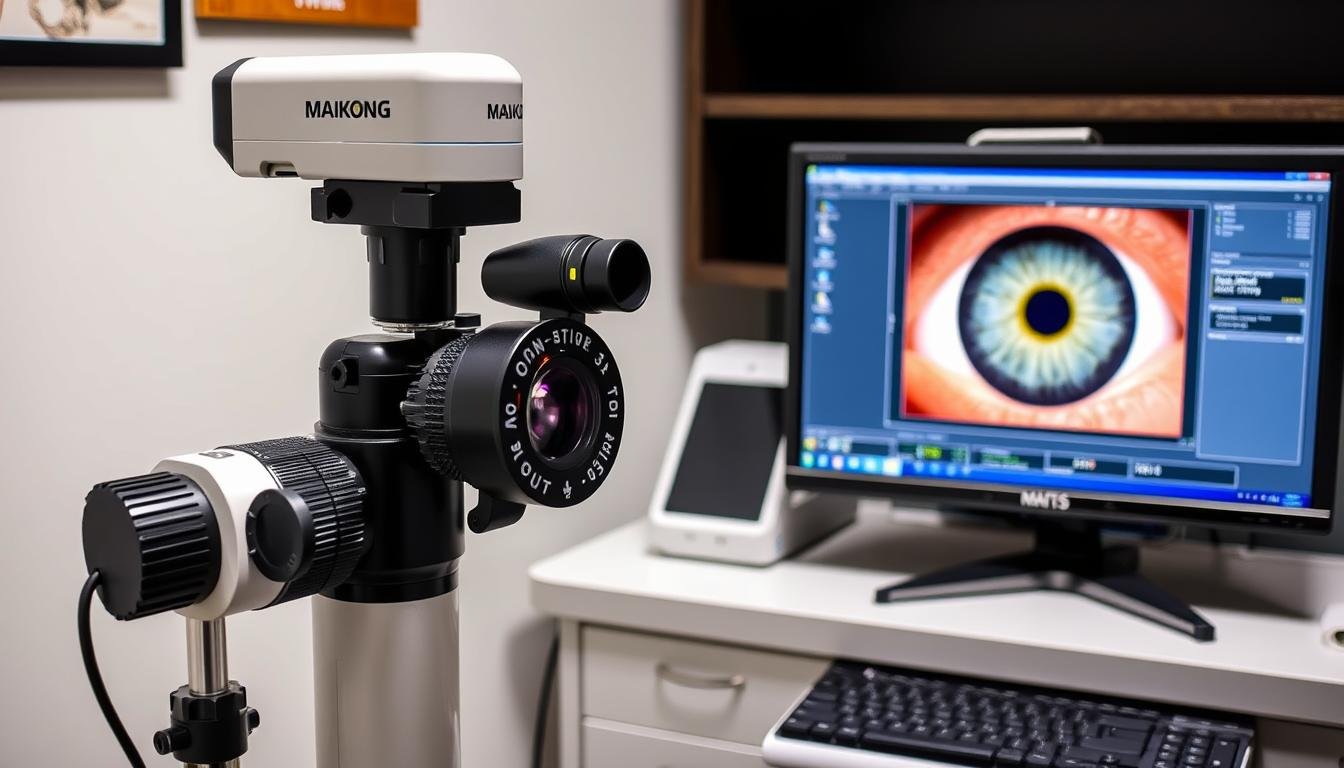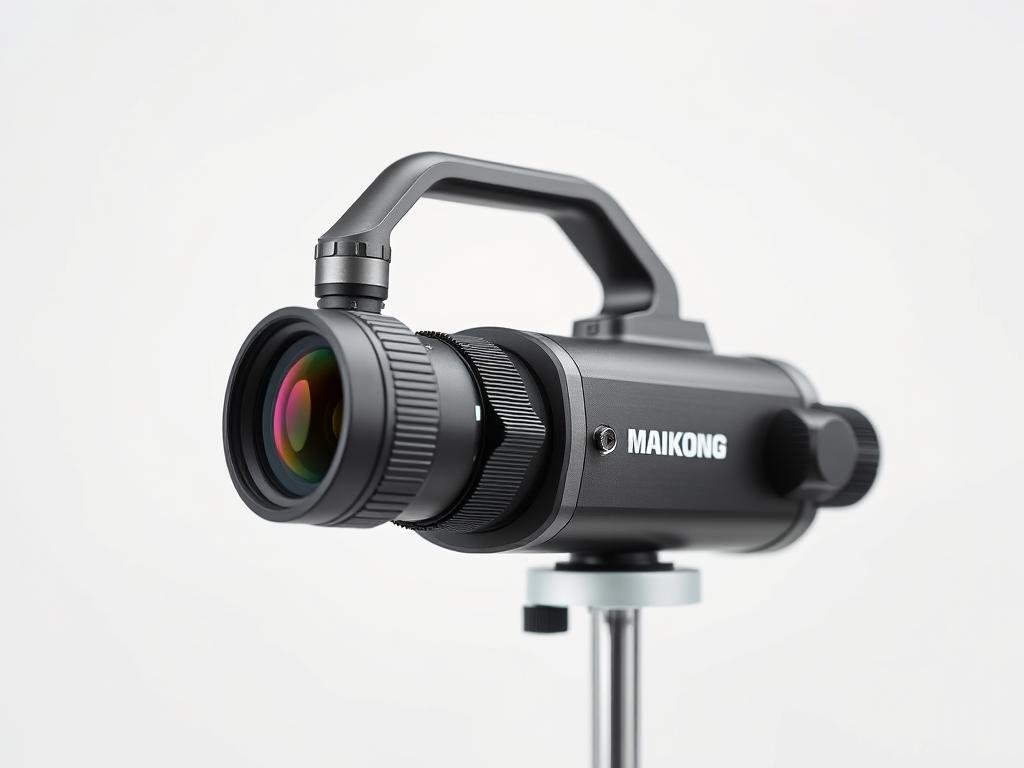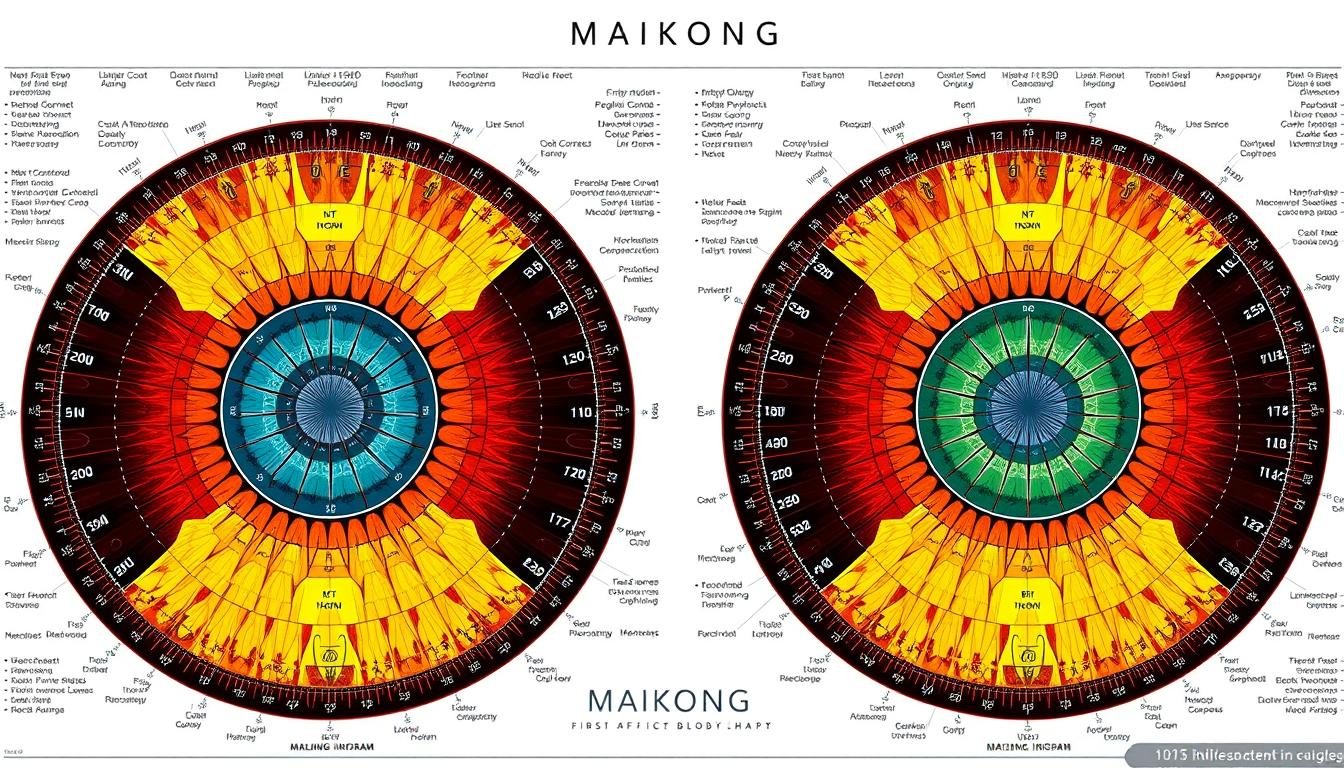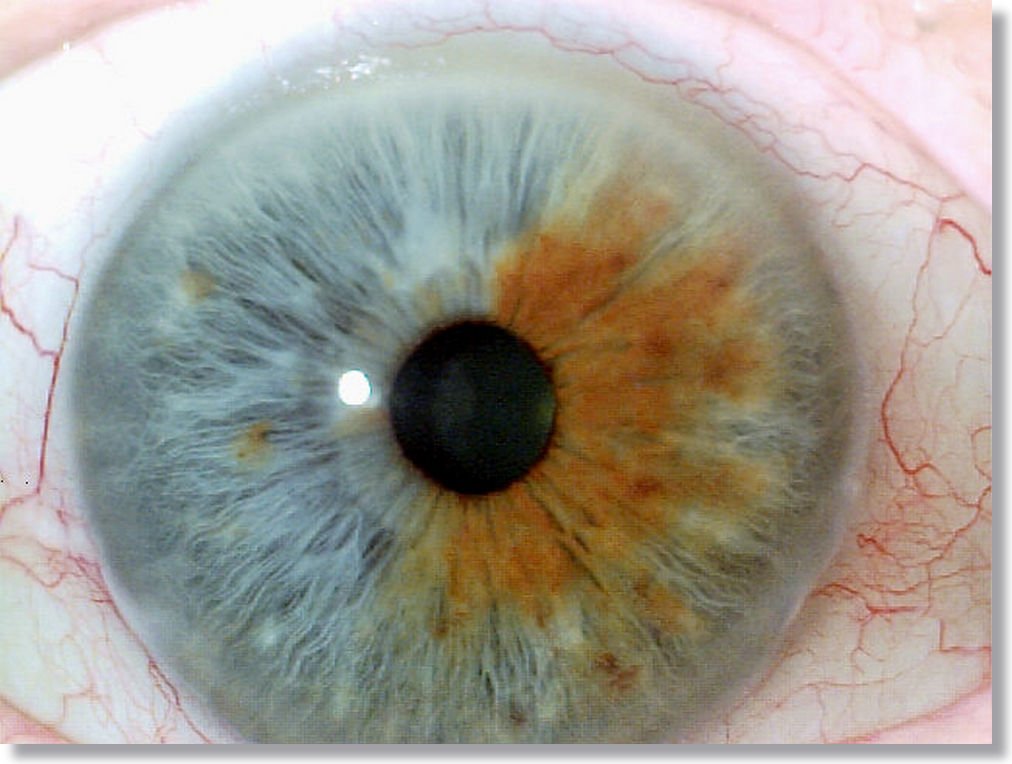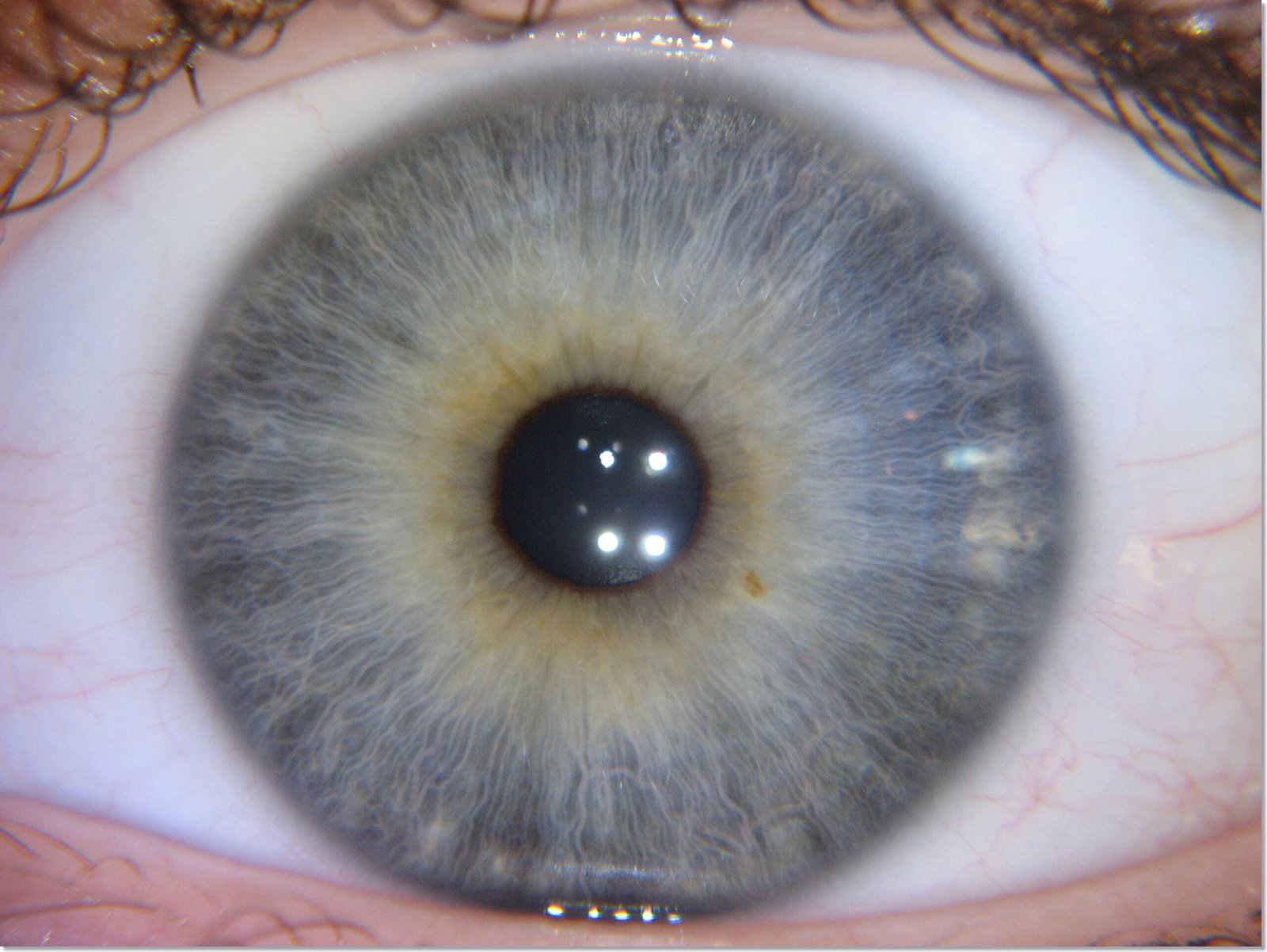Die Iridologie, die Untersuchung der Iris zur Gesundheitsbeurteilung, bietet einen faszinierenden Einblick in den Zustand Ihres Körpers. Eine ***Iridologie-Selbstdiagnosetabelle*** dient als Karte, um zu verstehen, was Ihre Augen über Ihren allgemeinen Gesundheitszustand verraten. Mit dem richtigen Wissen und den richtigen Werkzeugen können Sie wertvolle Erkenntnisse über potenzielle Gesundheitsprobleme gewinnen, bevor diese sich als Symptome manifestieren. In diesem umfassenden Leitfaden erfahren Sie, wie Sie diese Diagramme effektiv zur Beurteilung Ihres persönlichen Wohlbefindens nutzen und interpretieren können.
Was ist Iridologie und wie funktioniert sie?

Detaillierte Irismuster offenbaren wertvolle Gesundheitsinformationen, wenn sie mit geeigneten Werkzeugen analysiert werden
Unter Iridologie versteht man die Untersuchung der Iris – des farbigen Teils Ihres Auges – zur Beurteilung möglicher Gesundheitszustände. Diese alternative Medizinpraxis basiert auf der Theorie, dass jeder Bereich der Iris verschiedenen Organen und Systemen im Körper entspricht. Ärzte glauben, dass Veränderungen in diesen Irisregionen auf sich entwickelnde Gesundheitsprobleme hinweisen können, oft bevor herkömmliche Symptome auftreten.
Die Praxis reicht Jahrtausende zurück und findet sich in alten ägyptischen, chinesischen und indischen Texten. Die moderne Iridologie wurde jedoch im 19. Jahrhundert formalisiert, als der ungarische Arzt Dr. Ignatz von Peczely die erste Iridologie-Tabelle veröffentlichte. Später entwickelte Dr. Bernard Jensen diese Konzepte in den 1950er Jahren weiter und erstellte umfassende Irisdiagramme, auf die noch heute Bezug genommen wird.
Im Kern dient die Iridologie als diagnostisches Instrument, indem sie Markierungen, Farben und Muster in der Iris untersucht, die auf eine Entzündung, Ansammlung von Toxinen oder Organstress hinweisen können. Während die Schulmedizin weiterhin skeptisch bleibt, nutzen viele Heilpraktiker die Iridologie als Teil eines ganzheitlichen Gesundheitsbewertungsansatzes.
Die Grundlagen einer ***Iridologie-Selbstdiagnosetabelle*** verstehen

Standard-Iridologie-Diagramm, das Körpersysteme bestimmten Iriszonen zuordnet
Eine ***Iridologie-Selbstdiagnosetabelle*** unterteilt die Iris in mehrere Zonen, die jeweils unterschiedlichen Körperteilen und -systemen entsprechen. Diese Diagramme zeigen normalerweise sowohl die linke als auch die rechte Iris, da sie verschiedene Aspekte Ihres Körpers darstellen. Für eine genaue Selbsteinschätzung ist es wichtig zu verstehen, wie man diese Diagramme liest.
Grundstruktur der Iridologie-Diagramme
Die meisten Iridologie-Diagramme unterteilen die Iris in etwa 80–90 Zonen, die in einem uhrenähnlichen Muster angeordnet sind. Das Diagramm ist wie folgt aufgebaut:
- Die rechte Iris entspricht im Allgemeinen der rechten Körperseite
- Die linke Iris entspricht im Allgemeinen der linken Körperseite
- Der äußere Ring der Iris bezieht sich auf Haut, Knochen und äußere Körperteile
- Mittlere Ringe entsprechen den wichtigsten Organen und Systemen
- Die inneren Ringe in der Nähe der Pupille beziehen sich auf die Verdauungsorgane
Iriszonen und ihre Körperkorrespondenzen
Richtige Iriszonen
- Top Region: Gehirn, Kopf und Nebenhöhlen
- Oben rechts: Lungen- und Brustgewebe
- Rechte Seite: Leber und Gallenblase
- Unten rechts: Aufsteigender Doppelpunkt
- Unten: Fortpflanzungsorgane
- Unten links: Blinddarm und rechte Niere
- Linke Seite: Wirbelsäule und Herz
- Oben links: Schilddrüse und Rachen
Verließ Iriszonen
- Obere Region: Gehirn und Gehirnkreislauf
- Oben links: Lungen- und Brustgewebe
- Linke Seite: Milz und Magen
- Unten links: Absteigender Doppelpunkt
- Unten: Fortpflanzungsorgane
- Unten rechts: Linke Niere
- Rechte Seite: Wirbelsäule und Herz
- Oben rechts: Schilddrüse und Rachen
Interpretieren von Zeichen und Markierungen auf einem Iridologie-Diagramm

Häufige Irismarkierungen und ihre potenziellen gesundheitlichen Hinweise
Wenn Sie eine ***Iridologie-Selbstdiagnosetabelle*** verwenden, müssen Sie verschiedene Markierungen und Muster in Ihrer Iris identifizieren. Diese Anzeichen können Aufschluss über den Zustand Ihres Körpers geben. Hier sind die wichtigsten Markierungen, auf die Sie achten sollten:
| Iris Zeichen |
Aussehen |
Möglicher Hinweis |
| Radiale Linien |
Gerade Linien, die vom Schüler bis zur äußeren Iris ausstrahlen |
Normale Irisstruktur; gesundes Gewebe |
| Lacuna |
Geschlossene dunkle Bereiche, die Seen ähneln |
Inhärente Schwäche oder Läsion im entsprechenden Organ |
| Kryptionen |
Offene, blütenartige Muster |
Potenzial für die Beseitigung von Toxinen |
| Pigmentflecken |
Dunkle Flecken auf der Irisoberfläche |
Mögliche Ansammlung von Toxinen oder Medikamentenablagerungen |
| Natriumring |
Weißer Ring um die äußere Iris |
Mögliches Salz-/Mineralien-Ungleichgewicht |
| Nervenringe |
Rundringe um die Iris |
Nervöse Anspannung oder Stress |
| Lymphatischer Rosenkranz |
Weiße Punkte bilden einen Kreis |
Verstopfung des Lymphsystems |
Farbvariationen und ihre Bedeutung
Auch die Irisfarbe spielt bei der iridologischen Beurteilung eine wichtige Rolle. Unterschiedliche Grundfarben können auf unterschiedliche Verfassungstendenzen hinweisen:
Blau/Graue Iris
Oft verbunden mit einer lymphatischen Konstitution. Kann auf eine Empfindlichkeit gegenüber Atemwegs- und Lymphproblemen hinweisen.
Braune Iris
Verbunden mit hämatogener Konstitution. Kann auf eine Veranlagung zu Blut-, Leber- und Verdauungsproblemen hinweisen.
Gemischte/grüne Iris
Zeigt eine gemischte Konstitution an. Kann sowohl lymphatische als auch hämatogene Tendenzen aufweisen.
So führen Sie eine Selbstdiagnose mithilfe einer Iridologietabelle durch

Richtige Technik zur Selbstuntersuchung unter Verwendung von Vergrößerung und guter Beleuchtung
Während für eine umfassende Beurteilung immer eine professionelle Analyse empfohlen wird, können Sie eine grundlegende Selbstuntersuchung mithilfe einer ***Iridologie-Selbstdiagnosetabelle*** durchführen. Befolgen Sie diese Schritte, um die genauesten Ergebnisse zu erzielen:
- Sammeln Sie die richtigen Werkzeuge: Sie benötigen eine gute Lupe (mindestens 5-fache Vergrößerung), einen gut beleuchteten Spiegel und eine gedruckte Iridologietabelle als Referenz.
- Sorgen Sie für die richtige Beleuchtung: Natürliches Tageslicht ist ideal. Vermeiden Sie direktes Sonnenlicht, da dies zu einer zu starken Kontraktion Ihrer Pupillen führen kann. Stellen Sie sich in die Nähe eines Fensters mit indirektem Licht.
- Positionieren Sie sich richtig: Stellen Sie sich etwa 25 cm vom Spiegel entfernt auf und halten Sie die Lupe zwischen Ihrem Auge und dem Spiegel.
- Untersuchen Sie jeweils ein Auge: Beginnen Sie mit Ihrem rechten Auge und vergleichen Sie das, was Sie sehen, mit der Tabelle der rechten Iris. Untersuchen Sie dann Ihr linkes Auge.
- Achten Sie auf markante Markierungen: Achten Sie auf offensichtliche Verfärbungen, dunkle Flecken, Ringe oder ungewöhnliche Muster.
- Vergleichen Sie mit der Tabelle: Ordnen Sie die Position aller Markierungen den entsprechenden Körperbereichen auf Ihrer Iridologietabelle zu.
- Dokumentieren Sie Ihre Erkenntnisse: Machen Sie sich Notizen oder Fotos (wenn möglich), um Änderungen im Laufe der Zeit zu verfolgen.
Wichtiger Hinweis: Die Selbstdiagnose sollte die professionelle medizinische Beratung ergänzen und nicht ersetzen. Nutzen Sie Ihre Erkenntnisse als Ausgangspunkt für weitere Untersuchungen mit qualifizierten Ärzten.
Einschränkungen und Überlegungen zur Iridologie-Selbstdiagnose
Vorteile der Iridologie-Selbstbewertung
- Nicht-invasive Beobachtungsmethode
- Kann potenzielle Probleme erkennen, bevor Symptome auftreten
- Fördert eine proaktive Gesundheitsüberwachung
- Bietet eine ganzheitliche Sicht auf Körpersysteme
- Kann andere Gesundheitsbewertungen ergänzen
Einschränkungen zu berücksichtigen
- Erfordert Übung, um genau zu interpretieren
- Von der Schulmedizin nicht erkannt
- Es können keine spezifischen Krankheiten diagnostiziert werden
- Bei der Selbsteinschätzung können subtile Anzeichen übersehen werden
- Sollte professionelle medizinische Versorgung nicht ersetzen
Obwohl die Iridologie wertvolle Erkenntnisse liefern kann, ist es wichtig, ihre Grenzen zu verstehen. Die Praxis eignet sich am besten als Bestandteil eines umfassenden Gesundheitsbewertungsansatzes und nicht als eigenständige Diagnosemethode.
“Die Iridologie ist am wertvollsten, wenn sie zur Identifizierung potenzieller Schwachstellen oder Problembereiche eingesetzt wird, die dann durch entsprechende Änderungen des Lebensstils oder weitere Untersuchungen durch qualifiziertes medizinisches Fachpersonal angegangen werden können.”
– Dr. Bernard Jensen, Pionier der modernen Iridologie
Häufige Gesundheitszustände, sichtbar durch Iridologie
Wenn Sie eine ***Iridologie-Selbstdiagnosetabelle*** verwenden, können Sie Muster erkennen, die mit verschiedenen Gesundheitszuständen korrelieren. Obwohl die Iridologie nicht zur Diagnose spezifischer Krankheiten eingesetzt werden sollte, kann sie Bereiche aufzeigen, die potenziell Anlass zur weiteren Untersuchung geben.
Verdauungssystem
- Dunkle Flecken im Darm können auf eine schlechte Verdauung hinweisen
- Radiale Linien im Magenbereich könnten auf eine Reizung hinweisen
- Eine Gelbfärbung kann mit Leber- oder Gallenblasenstress zusammenhängen
- Weiße Flecken weisen oft auf eine mögliche Entzündung hin
Kreislaufsystem
- Ein weißer Ring um die Iris kann auf Cholesterinprobleme hinweisen
- Rote Gefäße in der Sklera können auf Blutdruckprobleme hinweisen
- Dunkle Flecken im Herzbereich können auf eine Herzbelastung hinweisen
- Pigmentansammlungen können mit Durchblutungsstörungen zusammenhängen
Nervensystem
- Nervenringe deuten auf eine mögliche nervöse Anspannung hin
- Radiale Furchen können auf eine Stressreaktion hinweisen
- Dunkle Flecken in Gehirnbereichen können auf geistige Erschöpfung hinweisen
- Unregelmäßige Muster können mit Schlafstörungen zusammenhängen
In der Iris sichtbare konstitutionelle Tendenzen
Über akute Zustände hinaus kann die Iridologie konstitutionelle Tendenzen aufdecken – inhärente Stärken und Schwächen, die Ihre Gesundheit ein Leben lang beeinflussen können:
| Verfassungstyp |
Iris -Eigenschaften |
Mögliche Tendenzen |
| Lymphatisch |
Blaue Iris mit offenen Fasern |
Atemempfindlichkeit, Lymphstau |
| Gallen |
Braun/bernsteinfarben mit gelblicher Verfärbung |
Leber-/Gallenblasenprobleme, Verdauungsstörungen |
| Hämatogen |
Gemischtes Braun mit rötlichen Farbtönen |
Ungleichgewichte im Blutzucker, Durchblutungsstörungen |
| Neurogen |
Viele Nervenringe, engmaschige Fasern |
Nervöse Anspannung, Stressempfindlichkeit |
Fallstudien: Praktische Anwendungen der Iridologie-Selbstdiagnose
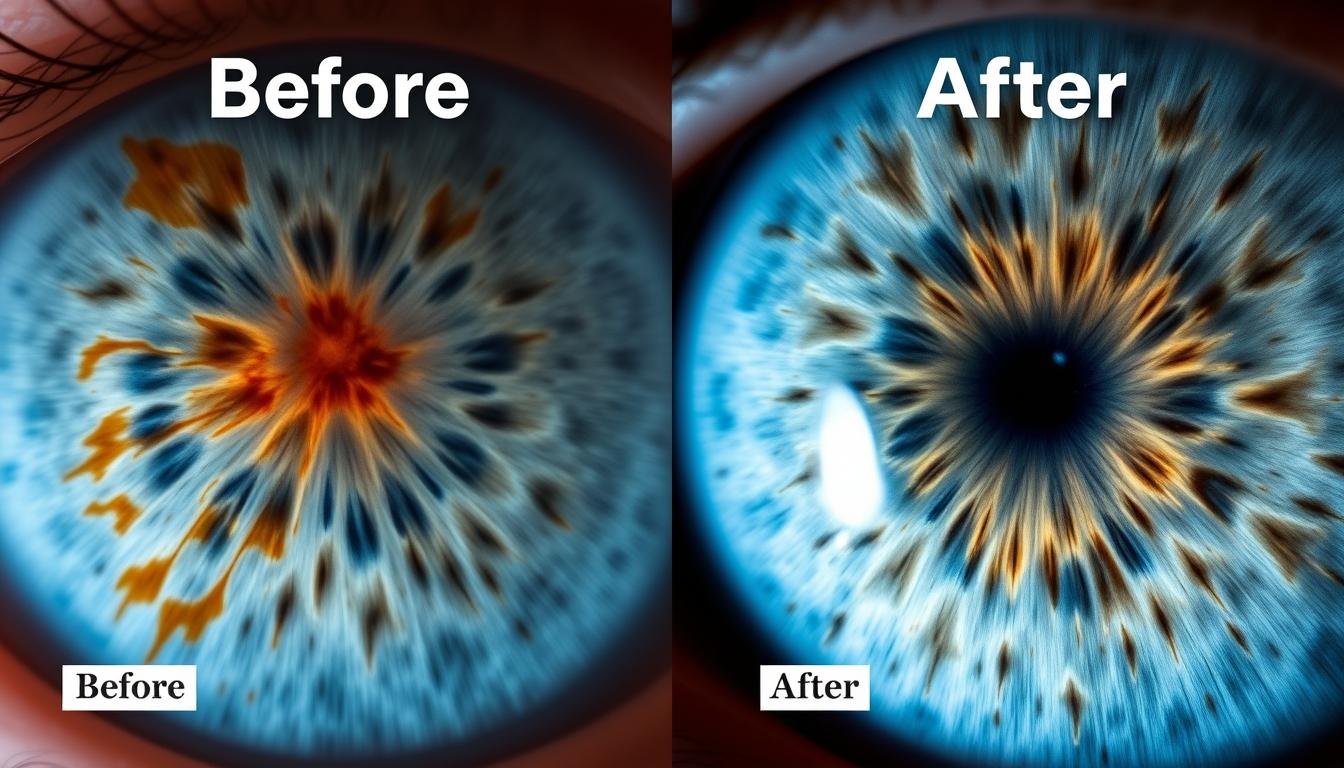
Vorher- und Nachher-Irisbilder zeigen Verbesserungen nach gezielten Gesundheitsinterventionen
Um die praktische Anwendung der Analyse der ***Iridologie-Selbstdiagnosetabelle*** zu veranschaulichen, betrachten Sie diese Beispiele aus der Praxis, bei denen die Beurteilung der Iridologie dazu beitrug, zugrunde liegende Gesundheitsprobleme zu identifizieren:
Fallstudie 1: Verbesserung der Verdauungsgesundheit
Erste Beobachtung: Eine 42-jährige Frau bemerkte mithilfe der Iridologiekarte und des Kamerasystems von MAIKONG dunkle Flecken und Lücken im Darmbereich ihrer Iris.
Durchgeführte Maßnahmen: Aufgrund dieser Beobachtungen konsultierte sie einen Heilpraktiker, der eine Ernährungsumstellung empfahl, einschließlich der Eliminierung entzündungsfördernder Lebensmittel und der Zugabe von Verdauungsenzymen.
Ergebnis: Nach sechs Monaten zeigte die nachfolgende Irisanalyse eine verringerte Dunkelheit im Darmbereich, was mit einer deutlichen Verbesserung der Verdauungssymptome und des Energieniveaus korrelierte.
Wichtige Erkenntnis: Die frühzeitige Erkennung durch Iridologie ermöglichte eine gezielte Intervention, bevor schwerwiegendere Verdauungsprobleme auftraten.
Fallstudie 2: Erkennung von Stressmustern
Erste Beobachtung: Ein 38-jähriger Mann identifizierte mit einem MAIKONG-Iriskop mehrere Nervenringe in seiner Iris, die auf chronische Stressmuster hindeuteten.
Durchgeführte Maßnahmen: Er führte ein umfassendes Stressbewältigungsprogramm ein, das Meditation, reduzierte Arbeitszeiten und adaptogene Kräuter umfasste.
Ergebnis: Die dreimonatige Nachuntersuchung zeigte eine leichte Verringerung der Hervorhebung des Nervenrings sowie eine verbesserte Schlafqualität und eine Verringerung der Angstsymptome.
Wichtige Erkenntnis: Die Iridologie lieferte eine sichtbare Bestätigung der Auswirkungen von Stress und motivierte zu konsequenten Änderungen des Lebensstils.
“Der Wert der Iridologie liegt nicht nur in der Identifizierung potenzieller Gesundheitsprobleme, sondern auch in der Bereitstellung eines visuellen Verfolgungssystems zur Überwachung der Reaktion des Körpers auf positive Eingriffe im Laufe der Zeit.”
Wann Sie professionelle Iridologie-Beratung einholen sollten
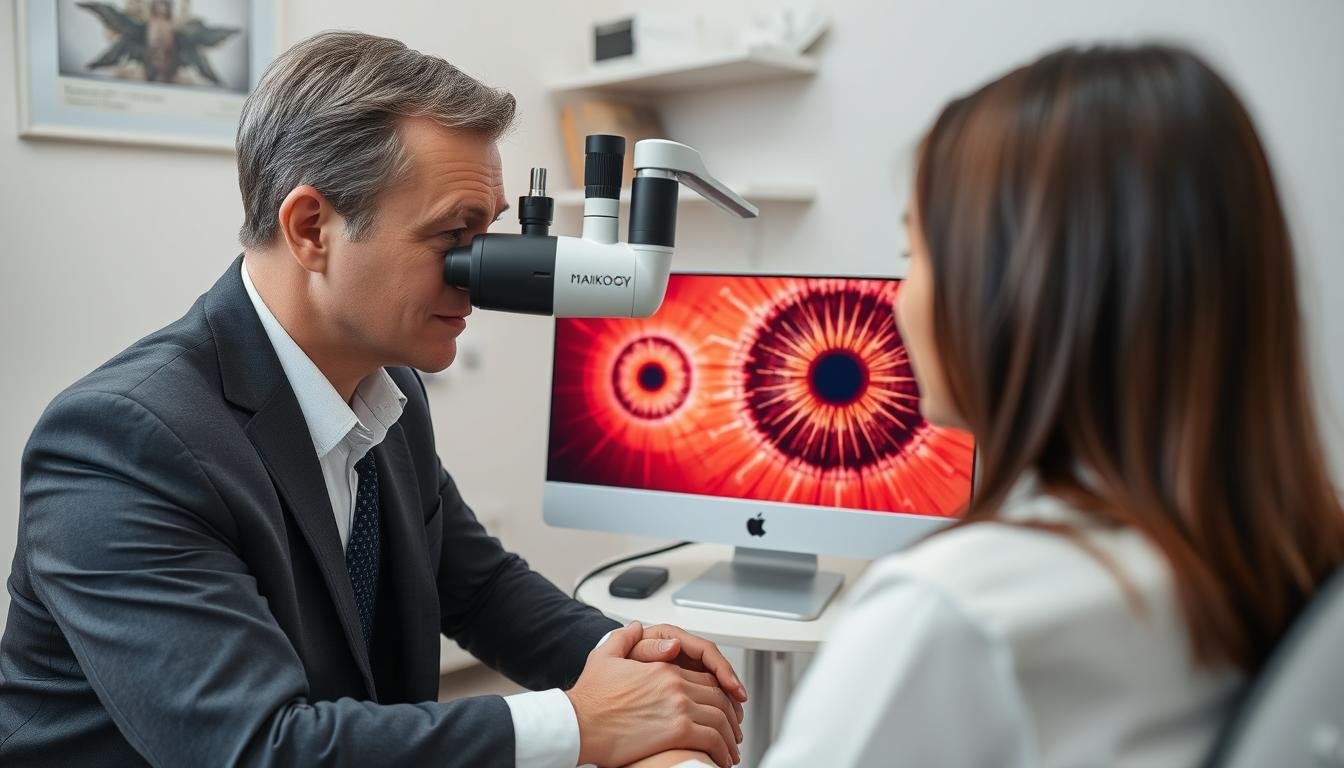
Professioneller Iridologe, der eine umfassende Irisanalyse mit MAIKONG-Geräten durchführt
Während die Selbsteinschätzung anhand einer ***Iridologie-Selbstdiagnosetabelle*** wertvolle Erkenntnisse liefern kann, erfordern bestimmte Situationen professionelle Beratung. Erwägen Sie die Konsultation eines ausgebildeten Iridologen, wenn:
- Sie erkennen besorgniserregende Muster, sind sich aber nicht sicher, wie Sie diese interpretieren sollen
- Sie haben anhaltende Gesundheitssymptome, die mit herkömmlichen Tests nicht erklärt werden können
- Sie möchten eine umfassende präventive Gesundheitsstrategie entwickeln
- Sie benötigen eine Bildgebung mit höherer Auflösung, als die Selbstuntersuchung bieten kann
- Sie möchten subtile Veränderungen Ihrer Iris im Laufe der Zeit mit professioneller Dokumentation verfolgen
Suche nach einem qualifizierten Iridologen
Suchen Sie bei der Suche nach professioneller Beratung nach Praktikern mit:
- Richtige Zertifizierung: Ausbildung an anerkannten iridologischen Institutionen
- Professionelle Ausrüstung: Hochwertige Werkzeuge wie MAIKONG-Iriskope und Kameras
- Ergänzende Expertise: Hintergrund in Naturheilkunde, Ernährung oder anderen Gesundheitsbereichen
- Kundenstimmen: Positives Feedback von früheren Kunden
- Ethischer Ansatz: Ärzte, die die Iridologie als Teil einer ganzheitlichen Beurteilung und nicht als eigenständiges Diagnoseinstrument einsetzen
MAIKONG: Über 20 Jahre Erfahrung in der Iridologie-Ausrüstung

Die hochmoderne Produktionsanlage von MAIKONG gewährleistet Präzision und Qualität
Seit über zwei Jahrzehnten steht MAIKONG an der Spitze der Entwicklung von Geräten für die Iridologie und kombiniert Spitzentechnologie mit traditionellen Prinzipien der Iridologie. Unser Engagement für Qualität und Innovation hat uns bei Ärzten weltweit zu einem vertrauenswürdigen Namen gemacht.
Technische Unterstützung
4,8/5
Unser Engagement für Exzellenz in der Iridologie
Forschung & Entwicklung
MAIKONG investiert stark in die laufende Forschung, um unsere Iridologie-Tools kontinuierlich zu verbessern. Unser R&Das D-Team kombiniert Fachwissen in der Optiktechnik mit dem Input von praktizierenden Iridologen, um Geräte zu entwickeln, die den realen klinischen Anforderungen gerecht werden.
Qualitätsfertigung
Jedes MAIKONG-Produkt durchläuft strenge Qualitätskontrolltests, bevor es unsere Kunden erreicht. Unsere Herstellungsprozesse entsprechen internationalen Standards und gewährleisten Zuverlässigkeit und Präzision in jedem von uns hergestellten Gerät.
Erleben Sie den MAIKONG-Unterschied
Schließen Sie sich Tausenden von Ärzten auf der ganzen Welt an, die MAIKONG bei ihrem Bedarf an Iridologiegeräten vertrauen. Von einfachen Selbstbewertungstools bis hin zu fortschrittlichen professionellen Systemen haben wir Lösungen für jedes Praxisniveau.
Besuchen Sie unsere Website
Fazit: Stärken Sie Ihre Gesundheitsreise durch Iridologie
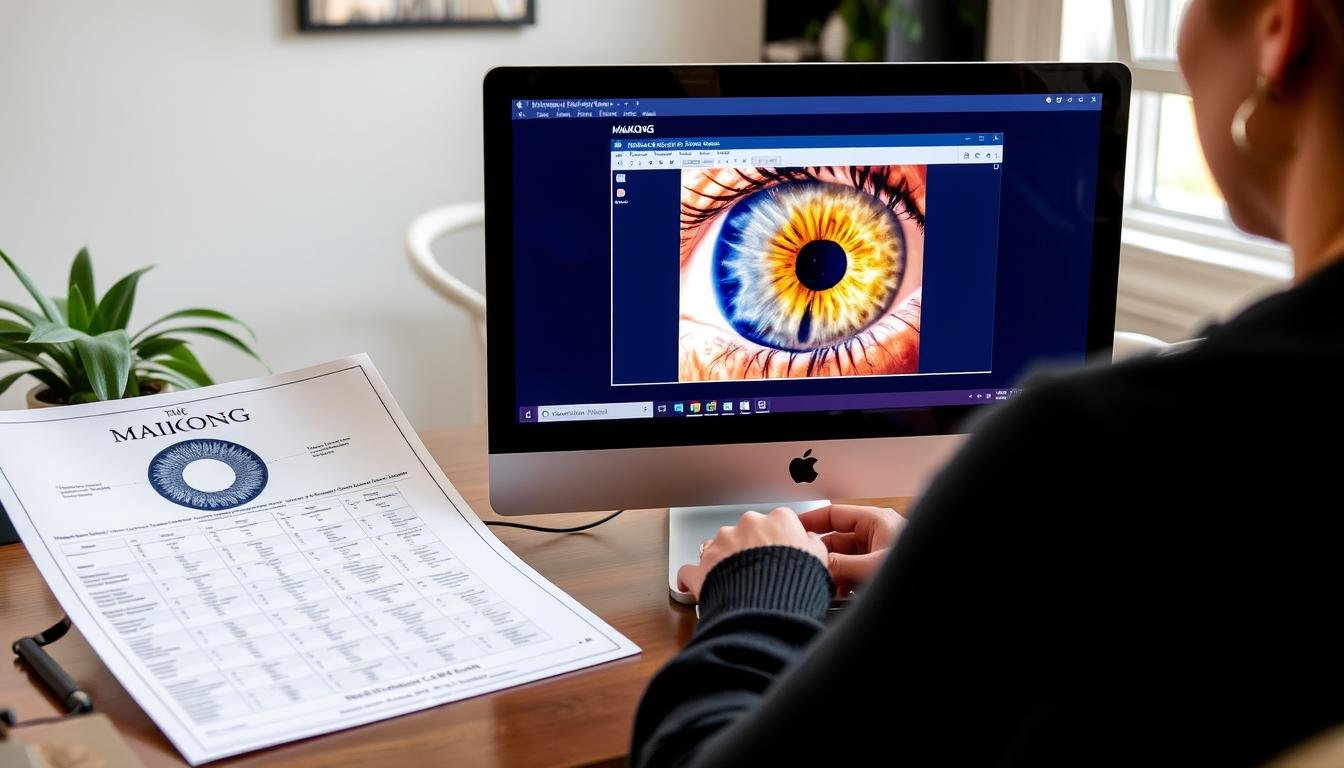
Übernehmen Sie die Kontrolle über Ihre Gesundheit durch eine fundierte iridologische Selbsteinschätzung
Die Reise durch die Interpretation der ***Iridologie-Selbstdiagnosetabelle*** öffnet ein faszinierendes Fenster in das Innenleben Ihres Körpers. Durch das Verständnis der Sprache der Iris gewinnen Sie wertvolle Erkenntnisse, die Sie bei Ihren Gesundheitsentscheidungen und Präventionsstrategien unterstützen können.
Egal, ob Sie gerade erst anfangen, sich mit der Iridologie zu beschäftigen, oder Ihre Praxis mit professionellen Werkzeugen erweitern möchten: MAIKONG ist bestrebt, Sie auf Ihrem Weg zur Gesundheit mit hochwertiger Ausrüstung, umfassenden Ressourcen und fachkundiger Anleitung zu unterstützen.
Denken Sie daran, dass die Iridologie am wirksamsten ist, wenn sie als Teil eines ganzheitlichen Gesundheitsansatzes eingesetzt wird – indem ihre Erkenntnisse mit der richtigen Ernährung, Bewegung, Stressbewältigung und bei Bedarf angemessener medizinischer Versorgung kombiniert werden. Durch die Integration dieser Ansätze können Sie auf ein optimales Wohlbefinden mit einem tieferen Verständnis der individuellen Bedürfnisse Ihres Körpers hinarbeiten.
Bereit, die Iridologie weiter zu erkunden?
Entdecken Sie MAIKONGs komplettes Sortiment an Iridologie-Werkzeugen und -Ressourcen, die sowohl Anfänger als auch erfahrene Praktiker unterstützen sollen.
Beginnen Sie noch heute Ihre Iridologie-Reise













 Detaillierte Irismuster offenbaren wertvolle Gesundheitsinformationen, wenn sie mit geeigneten Werkzeugen analysiert werden
Detaillierte Irismuster offenbaren wertvolle Gesundheitsinformationen, wenn sie mit geeigneten Werkzeugen analysiert werden


